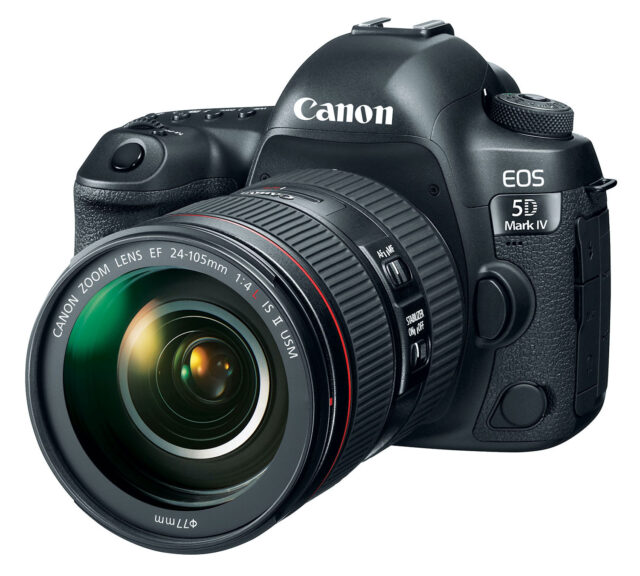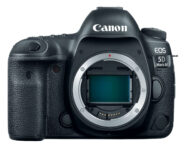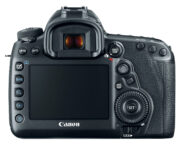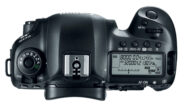Announced
Production status
System
Canon EOS system cameras
- Canon EF-M
- Canon EOS 10 S
- Canon EOS 10D
- Canon EOS 1D
- Canon EOS 1D mark II
- Canon EOS 1D mark II N
- Canon EOS 1D mark III
- Canon EOS 1D mark IV
- Canon EOS 1D X
- Canon EOS 1D X Mark II
- Canon EOS 1D X Mark III
- Canon EOS 1Ds
- Canon EOS 1Ds mark II
- Canon EOS 1Ds mark III
- Canon EOS 3
- Canon EOS 3000
- Canon EOS 5000
- Canon EOS 5D
- Canon EOS 5D mark II
- Canon EOS 5D mark III
- Canon EOS 5D mark IV
- Canon EOS 5Ds
- Canon EOS 5Ds R
- Canon EOS 620
- Canon EOS 630
- Canon EOS 650
- Canon EOS 6D
- Canon EOS 6D Mark II
- Canon EOS 700
- Canon EOS 750 QD
- Canon EOS 850
- Canon EOS A2
- Canon EOS D30
- Canon EOS D60
- Canon EOS ELAN
- Canon EOS ELAN 7E
- Canon EOS ELAN 7NE
- Canon EOS ELAN II
- Canon EOS IX
- Canon EOS IX Lite
- Canon EOS Rebel 2000
- Canon EOS Rebel G
- Canon EOS Rebel K2
- Canon EOS Rebel S II QD
- Canon EOS Rebel T2
- Canon EOS Rebel Ti
- Canon EOS Rebel X
- Canon EOS Rebel XS
- Canon EOS Rebel XS N DATE
- Canon EOS RT
- Canon EOS-1
- Canon EOS-1N
- Canon EOS-1N RS
- Canon EOS-1V
Canon EOS 5D mark IV
35mm AF digital SLR camera
Specification
| Format: | |
| 35mm full frame | |
Imaging sensor: | 36 × 24mm CMOS sensor |
Resolution: | 6720 × 4480 - 30 MP |
Sensor-shift image stabilization: | - |
| Canon EF [44mm] | |
| Shutter: | |
Type: | Focal-plane |
Model: | Electronically controlled |
Speeds: | 30 - 1/8000 + B |
| Exposure: | |
Exposure metering: | Through-the-lens (TTL), open-aperture |
Exposure modes: | Programmed Auto |
| Aperture-priority Auto | |
| Shutter-priority Auto | |
| Manual | |
| Physical characteristics: | |
Weight: | 890g |
Dimensions: | 150.7x116.4x75.9mm |
Manufacturer description #1
Featuring an approximately 30.4 million effective pixel 35 mm full-frame CMOS sensor and DIGIC 6+ imaging processor, the EOS 5D Mark IV achieves a standard ISO sensitivity range of 100-32000. Additionally, equipped with a newly developed mirror vibration control system, the camera achieves a maximum continuous-shooting speed of approximately 7 frames per second (fps). What’s more, it makes possible Dual Pixel RAW (DPRAW) shooting, which affixes the dual-pixel information captured by the image sensor to RAW images that can be used by Canon’s proprietary (free-of-charge) RAW processing software, Digital Photo Professional (Ver. 4.5), to perform such minute image processing as image micro-adjustment, bokeh shift and ghosting reduction.
The Canon EOS 5D Mark IV is equipped with 61 point high-density reticular AF II, achieving an expanded longitudinal focus area compared with its predecessor, and makes possible autofocus for all AF points*1 up to an aperture of f/8 when using an extender for super-telephoto shooting. Additionally, the AF can focus with high precision even in low-light environments with a minimum illumination of EV-3 at the central AF point. What’s more, the Digital Lens Optimizer function enables the correction of image degradation caused by lens distortion and diffraction phenomena, corrections that couldn’t be performed by conventional lens optics alone, and compensates for the apparent deterioration of high resolution caused by a low-pass filter.
Also, featuring the same approximately 150,000 pixel RGB+IR metering sensor as the EOS 5DS/5DS R (released in June 2015), the Eos 5D Mark IV achieves enhanced subject detection and tracking performance.
The EOS 5D Mark IV makes possible high-definition 4K video shooting at 30p, Full HD video at 60p, and 120p HD video ideal for slow motion, and offers a time lapse function that combines still images taken at a fixed interval to create a time-lapse video. Additionally, equipped with the same 4K frame capture function featured on the flagship EOS-1D X Mark II, users can extract selected frames*2 from recorded 4K video as approximately 8.8 megapixel JPEG still images.
Manufacturer description #2
MELVILLE, N.Y., August 25, 2016 – Canon U.S.A., Inc., a leader in digital imaging solutions, is proud to announce the EOS 5D Mark IV DSLR camera, the next generation of the popular and versatile 5D series of Canon professional DSLR cameras. Building on this legendary legacy, the EOS 5D Mark IV propels the series forward with a fusion of features and enhancements targeted to please even the most discerning creative eyes. The camera’s 30.4 megapixel 35mm Full Frame Canon CMOS sensor offers stunning image quality while the DIGIC 6+ Image Processor delivers 4K 30P video and up to and seven frames per second (fps) continuous shooting. To make video shooting even easier, the camera also features Canon’s propriety Dual Pixel CMOS AF, even when shooting 4K to help ensure sharp focus and subject tracking.
In addition, Canon is also introducing two new L-series EF lenses – the Canon EF 16-35mm f/2.8L III USM Ultra-Wide Zoom Lens and EF 24-105mm f/4L IS II USM Standard Zoom Lens– offering fantastic edge-to-edge sharpness across the imaging plane, as well as improved durability and performance.
“Canon’s EOS 5D series of DSLR cameras has a history of being at the forefront of still and video innovation. And today, we add to this family of cameras the EOS 5D Mark IV– the first in our 5D series to offer 4K video and built-in Wi-Fi and NFC connectivity,” said Yuichi Ishizuka, president and COO, Canon U.S.A., Inc. “In developing this new DSLR camera, we listened to the requests of current EOS users to create for them a modern, versatile camera designed to help them create and share beautiful still and video imagery.”
“Outdoor photographers will really appreciate the new EOS 5D Mark IV, as it offers more resolution, better detail in the shadows, and improved speeds in autofocus and frame rate,” reported acclaimed nature photographer and Canon Explorer of Light George Lepp. “With the fabulous resolution of 4K video and the ability to make beautiful prints from a frame of that video as an added bonus, this camera sets a new mid-range standard for nature photography."
EOS 5D Mark IV DSLR Camera Specifications:
- New 30.4 Megapixel full-frame CMOS sensor for versatile shooting in nearly any light, with ISO range 100–32,000; expandable up to 50–102,400.
- 4K Motion JPEG video (DCI cinema-type 4096 x 2160) at 30p or 24p; in-camera still frame grab* of 4K 8.8-Megapixel images; multiple video options include Full HD up to 60p, and HD up to 120p.
- Superb Dual Pixel CMOS AF for responsive and smooth AF during video or Live View shooting; LCD monitor has full touch-screen interface, including selection of AF area.
- Excellent performance — up to 7.0 fps** continuous shooting speed with high performance DIGIC 6+ Image Processor for improved speed and excellent image quality.
- 61 AF points with expanded vertical coverage with 41 cross-points, and AF possible at all 61 AF points with many lens + extender combinations effective at f/8.
- 150,000-pixel RGB+IR metering sensor helps provide precise exposure metering, helps detect flickering lights and allows for enhanced scene recognition and face detection capabilities.
- Dual Pixel RAW***, in-camera Digital Lens Optimizer during JPEG shooting and Diffraction Correction technologies.
- Built-in Wi-Fi®1 and NFC2 connectivity provide easy sharing to compatible smart devices, select social media sites and the Canon Connect Station CS100 device.
- Built-in GPS3 provides geotag information including auto time syncing with Universal Time Code (UTC) via satellites.
“I have owned every camera in the 5D line, so the new EOS 5D Mark IV feels like an old friend in my hands, only better” exclaimed renowned wedding photographer and Canon Explorer of Light Clay Blackmore. “It has everything a professional photographer needs to create outstanding, quality images every time. Between its ability with still images and video capture, it is the complete package and—in my opinion—the best wedding camera on the planet.”
“When working with macro beauty photography, I need fast and precise autofocus. With each breath of the subject I need to be able to check the exact placement of focus, whether on the tips of the eyelashes, the pupils or other detail of her face. The EOS 5D Mark IV gave me exactly the speed and precision required to capture the detail and stunning color that is a signature of my beauty work,” remarked celebrated fashion and beauty photographer and Canon Explorer of Light Lindsay Adler. “I’m always looking for ways to create visuals that help me stand out from the competition. Cinemagraphs, also known as ‘living images,’ allow me to combine still frames and video to create captivating images. Because of the EOS 5D Mark IV’s 4K and slow motion capabilities, I now have the ability to create high quality and visually compelling cinemagraphs without having to invest in an expensive cinema camera!”
The Next Generation of EOS 5D Cameras
In addition to the new Full Frame sensor, the new EOS 5D Mark IV includes a 61-point High-Density Reticular AF II system, similar to the one found in the flagship EOS-1D X Mark II, with all AF points selectable by the user (and up to 41 cross-type points depending on the lens in use). The AF system, improved over previous Canon 5D series models, includes expanded coverage across the frame that supports AF at maximum apertures up to f/8 with all 61 points for high-precision autofocus even when using EF super-telephoto lenses with an EF extender. Standard ISO range for the EOS 5D Mark IV is ISO 100-32,000 and is expandable to 50-102,400.
The EOS 5D Mark IV also introduces a new 150,000 pixel RGB+IR metering sensor with enhanced precision and performance compared to its predecessor, improving upon facial recognition and tracking as well as nature and sports scenes with fast-moving action. AF sensitivity in low light is EV-3 and EV-4 when in Live View mode. The EOS Scene Detection System can detect and compensate for flickering light sources that are often used in gymnasiums and swimming pools. When enabled, this anti-flicker system automatically adjusts shutter release timing to help reduce disparities in exposure and color especially during continuous burst shooting.
Following the groundbreaking video recording capabilities introduced in the EOS 5D Mark II and EOS 5D Mark III, the EOS 5D Mark IV takes the next leap forward offering DCI 4K video recording. Adding to the versatility of capturing 4K video, is Canon’s Dual Pixel CMOS AF. This proven autofocus system allows for continuous focus tracking of subjects, and can be customized by the user for optimal performance. Dual Pixel CMOS AF technology not only enhances 4K video recording, but also helps create crisp focus for 4K Frame Grab extraction of 8.8 megapixel still JPEG images, all done in camera.
Mobile Connectivity
For the first time in an EOS 5D series DSLR camera, the EOS 5D Mark IV features built-in Wi-Fi®1 and Near-Field Communication (NFC)™1 providing for the easy transfer of images and MP4 movies to compatible mobile devices, as well remote shooting when using the Canon Camera Connect App2. The EOS 5D Mark IV also includes a built-in GPS3 receiver with compass for precise geo-tagged information of latitude, longitude, and elevation. This is especially valuable to wildlife photographers and photojournalists who need to track their locations, as well as providing sports and wedding photographers the ability to sync a multiple-camera setup with extreme accuracy and precision. The camera’s built-in GPS can also be used to sync the camera’s time to the atomic clock, an invaluable feature when multiple photographers are covering the same event.
Similar cameras (1)
35mm full frame • Auto focus • Digital • Singe-lens reflex • Canon EF mount
| Model | Shutter | Metering | Modes | Year |
|---|---|---|---|---|
| Kodak DCS Pro SLR/c | E, 1/6000 | TTL • OA | PASM | 2004 ● |



